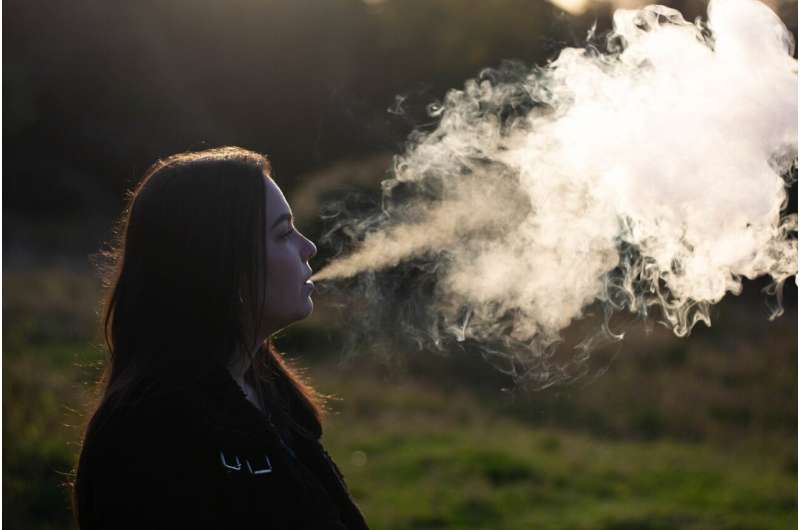Youth Vaping and Its Link to Future Substance Use and Health Risks

A comprehensive review links youth vaping to a higher risk of smoking, marijuana, and alcohol use, along with several health and mental health concerns, emphasizing the need for stronger protections for young people.
Recent comprehensive research published in the journal Tobacco Control highlights a significant and consistent link between vaping among young people and later initiation of smoking, marijuana, and alcohol use. An umbrella review of 56 systematic and umbrella reviews—most conducted after 2020—analyzed data from research published between 2016 and 2024 to understand the various health implications associated with youth vaping.
The findings reveal that teens who engage in vaping are substantially more likely to begin smoking cigarettes, with risks ranging from 50% up to 26 times higher than those who do not vape. This suggests a potential causal relationship between vaping and subsequent tobacco use. Additionally, vaping is strongly associated with increased use of other substances: it triples to sextuples the risk of marijuana use, and similarly elevates the likelihood of alcohol consumption and binge drinking.
Beyond substance use, vaping has been linked to numerous health concerns. Respiratory issues, particularly asthma, are common, with studies showing a 20-36% increased risk of diagnosis and a 44% heightened chance of symptom worsening. Other health risks observed include increased incidences of pneumonia, bronchitis, head and migraine headaches, dizziness, low sperm count, and poor oral health. Some reviews also suggest associations with mental health outcomes such as suicidal behaviors, as well as injuries like burns.
Despite the observational nature of much of this evidence, the findings underscore the health risks posed by vaping in adolescents and young adults. The authors emphasize that these consistent associations support implementing policy measures to restrict the sale and marketing of vaping products among youths. They recommend restrictions on advertising tactics that appeal to young audiences, along with broader public awareness campaigns to counteract targeted marketing and highlight potential health harms.
The global rise in youth vaping has been described as "alarming" by the World Health Organization, with prevalence rates in some regions reaching as high as 41% among 15-16-year-olds. The research advocates for robust interventions to limit youth exposure to vaping, aiming to prevent subsequent smoking and related health issues.
Source: [https://medicalxpress.com/news/2025-08-youth-vaping-linked-subsequent-marijuana.html]
Stay Updated with Mia's Feed
Get the latest health & wellness insights delivered straight to your inbox.
Related Articles
Emerging Bacterial Vaccine Shows Promise in Early Human Trials
A new vaccine targeting group B meningococcus shows promising immune responses in early-stage human trials, paving the way for broader protection against bacterial meningococcal disease.
Microbial DNA Signatures Distinguish Primary Liver Cancer from Metastatic Colorectal Cancer
A groundbreaking study reveals that microbial DNA signatures in blood plasma can accurately distinguish primary liver cancer from metastatic colorectal cancer, offering new hope for noninvasive cancer diagnostics and personalized treatment approaches.
Early Lead Exposure May Lead to Memory Problems in Later Life
Studies link childhood and early life lead exposure from environmental sources to increased memory problems and cognitive decline in older adults, underscoring the importance of environmental health policies.



